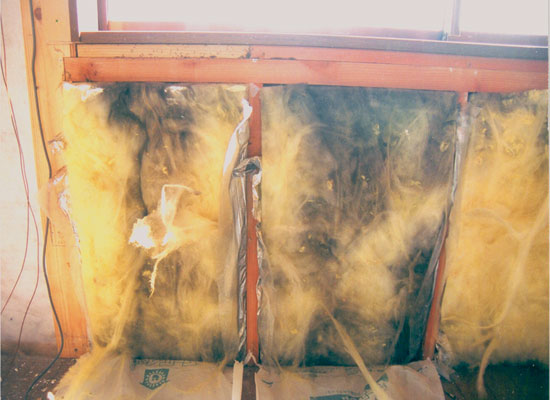Spray Foam Insulation in High Performing Building Designs
Beyond fire safety, SPF insulation can be a particularly good ally in showing compliance with many provisions of the International Energy Code. Since the Energy Code is very specific about insulation values, air infiltration, and vapor barriers, the documented traits of SPF insulation can be used to create and demonstrate buildings with high energy performance. In particular, the use of exterior continuous insulation helps a building meet and exceed the R-value or U-factor requirements for insulation or wall and roof assemblies respectively.
The Energy Code requirements related to air infiltration are intended to be met by a combination of design mandates and in field testing. The US Department of Energy (DOE) has indicated that up to 40% of residential energy loss is directly associated with unwanted air infiltration. The overall concept, then, is to seal the building as tight as possible, lower the air changes per hour caused by poor air sealing, and thus eliminate the negative impacts of the exterior environment on the interior conditioned spaces. The air sealing qualities of SPF insulation help create tighter building envelopes that can limit the inefficiencies of traditional construction and produce better performance all around.
By reducing air infiltration, any moisture in that air is also limited from travelling through the building assembly. The significance of moisture laden air was rather dramatically presented in a recent study by the Building Science Corporation. Researchers conducted a test showing that direct air infiltration can allow up to 90 times more moisture to pass through building materials when compared to simple diffusion of vapor through those materials.
 |
Air infiltration into a wall system brings significant amounts of moisture that can get trapped in a wall assembly and cause mold growth and damage in traditional construction. Photo courtesy of Demilec (USA) LLC |
Diffusion is simply the principle of vapor passing through a material based on its permeability to water. When testing a 4 foot by 8 foot sheet of gypsum board sealed around the edges and exposed to a humid condition the diffusion of moisture through it yielded 1/3 quart of water over time. By comparison, when a 1 inch square hole was cut in that gypsum board allowing moisture laden air through the gypsum board, a full 30 quarts of water was collected over the same time period. In other words, the air infiltration accounted for 90 times more water vapor than simple diffusion—a very dramatic difference. Thus tighter building envelopes using SPF insulation allow us to more easily control the movement of air and therefore dramatically limit moisture transfer through walls. Eliminating that moisture means eliminating the possibility of damaging condensation and the detrimental effects it can have on building materials. It also means that moisture doesn't make its way to organic materials in the building that could feed the growth of mold.









